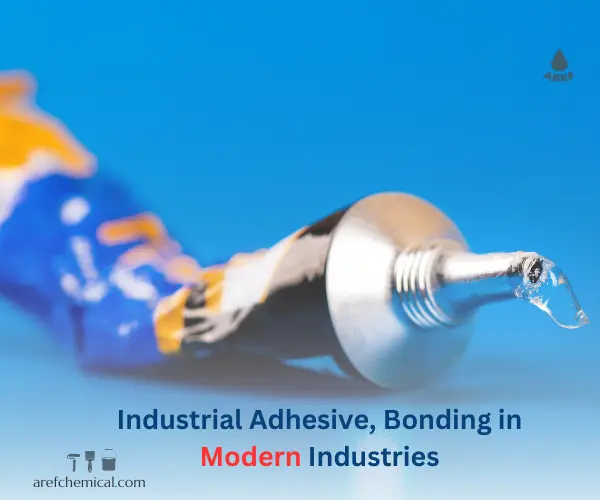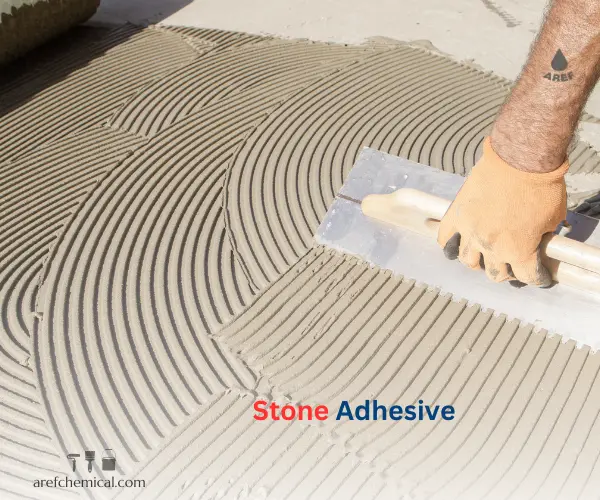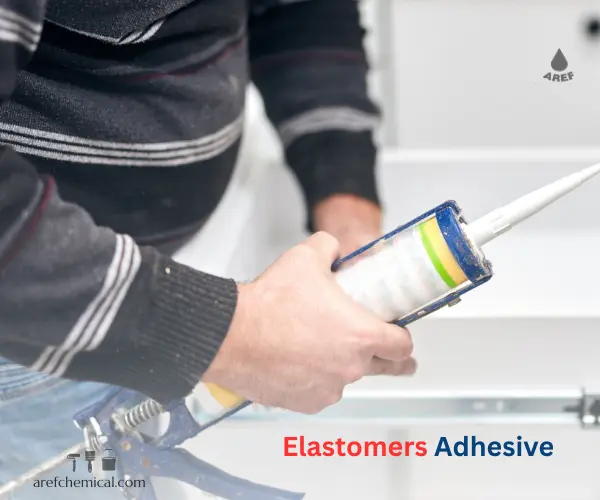Types of industrial adhesives are considered one of the essential tools in various industries and play an important role in connections, maintenance and repairs. These adhesives are produced with specific chemical compounds that enable them to interact well with various materials, including metals, plastics, wood and glass. Industrial adhesive derivatives have wide applications in the construction, automotive, electronics and consumer product manufacturing industries due to their characteristics such as resistance to water, heat and pressure, as well as high drying speed. Choosing the right type of adhesive, depending on the specific needs of each project and the materials used, is of great importance and can have a great impact on the quality and final durability of the products.
Industrial adhesives, the foundation of innovation and bonding in modern industries
In the modern world where technology and industry are rapidly advancing, the need for materials that can connect different parts to each other and create the necessary strength is of particular importance. Industrial adhesives, as one of the essential tools in this field, play a key role in connecting and stabilizing a variety of materials, including metal, plastic, wood, glass and other advanced materials. Using precise and advanced chemical compounds, these adhesives not only create a strong connection, but also show high resistance to environmental factors such as humidity, heat and pressure.
Industrial adhesives not only help improve the quality of products, but also reduce costs and make production processes faster and more efficient by reducing the need for traditional joining methods such as welding or screwing. From the automotive and aerospace industries to the electronics and construction industries, industrial adhesives are known as one of the essential components in the design and production of modern products. Below, we will examine 5 industrial adhesives, the properties and applications of these amazing materials.
1.Acrylic Adhesive
Acrylic adhesive is a type of synthetic adhesive made from acrylic polymers or their derivatives. These adhesives are used in many different industries and applications due to their unique properties such as high adhesion,resistance to environmental factors and chemical stability. Acrylic polymers are based on compounds such as acrylic esters or methacrylic acid, which gives them special properties.
Ingredients of Acrylic Adhesive
Acrylic adhesives are made from a combination of acrylic monomers (such as methyl methacrylate) which, after the polymerization process, form long polymer chains. These polymers are usually combined with additives such as resins, fillers and chemical additives to achieve the desired properties.
Properties and characteristics of acrylic adhesives
Acrylic adhesives have unique properties that distinguish them from other types of adhesives due to their specific chemical composition. Such as excellent adhesion, resistance to environmental factors, chemical stability, drying speed and flexibility.
Acrylic adhesives are divided into two main categories: water-soluble adhesives and solvent-based adhesives. As one of the most advanced and practical adhesives available, it plays an important role in modern industries. These adhesives combine unique chemical and mechanical properties to create strong and stable bonds. From automotive industries to household applications, acrylic adhesives have become one of the essential tools in today’s world due to their flexibility and high performance.
2.Stone adhesive
Stone adhesive is a type of industrial adhesive that is used specifically for gluing and installing various types of stones, tiles and ceramics. These adhesives are usually made based on cement, resin or polymers and usually have features such as strong adhesion, resistance to water and cold, and high durability.
Stone adhesive features:
- High adhesion: Ability to firmly bond stone to various surfaces.
- Resistance to atmospheric factors: Such as humidity and variable temperatures.
- Flexibility: Some types of stone adhesive have the property of responding appropriately to minor changes in the size and shape of the material.
- Ease of use: They are usually easy to apply and do not require special equipment.
Applications:
- Installation of tiles and ceramics
- Bonding natural and artificial stones
- Stone repairs
- Decorative constructions
3. Wood glue
Wood glue, as a subset of industrial glue, has a special place in the general category of glues. These types of glues are specifically designed to bond wooden parts and, given their properties and ingredients, can be used in a wide range of industrial applications. In the following, wood glue will be examined from the perspective of various types of industrial glues.
Comparison of wood glue with various types of industrial glues
Wood glues differ from other industrial glues (such as metal, plastic, and glass glues) in terms of their properties and applications:
- Ingredients:
Wood glues are usually made from materials such as formaldehyde, polyurethane, and PVA resins, while metal or plastic glues may use different materials such as cyanoacrylate or epoxy.
- Application conditions:
Wood adhesives are usually more suitable for indoor environments and applications that do not require high resistance to moisture and heat. In contrast, industrial adhesives such as epoxy are designed for harsh environments and heavy-duty applications.
- Cost:
Wood adhesives are usually cheaper than advanced industrial adhesives such as epoxy or cyanoacrylate.
Wood adhesive applications in various industries
Wood adhesives, as one of the industrial adhesives, are used in many industries:
- Furniture industries:
For connecting wooden parts in the manufacture of tables, chairs, cabinets and other furniture.
- Construction industries:
For connecting wooden boards in the manufacture of doors, windows and other construction parts.
- Wood product manufacturing industries:
In the production of particleboard, MDF and multilayer wood sheets.
- Arts and crafts and decoration:
For connecting wooden parts in art projects and interior decoration.
Wood glue, as one of the types of industrial adhesives, plays an important role in connecting wooden parts and producing various products. These adhesives have various properties, depending on their ingredients (such as resins, PVA and polyurethane), which make them suitable for different applications. The choice of wood glue type depends on factors such as the type of wood, environmental conditions and end use. Due to technological advances, modern wood glues not only have higher strength and durability, but also have improved their performance against environmental factors.
4.Thermoplastic Adhesives or 1-2-3
Thermoplastic Adhesives or 1-2-3 are a type of adhesive that becomes soft and malleable at high temperatures and hardens and becomes strong after cooling. These adhesives are used in many industries due to their unique properties. Unlike thermosetting adhesives, which cannot be melted after hardening, thermoplastic adhesives have the ability to return to a soft and flexible state at high temperatures.
Characteristics of Thermoplastic Adhesives
Thermoplastic adhesives have certain characteristics that make them suitable for specific applications:
- Remeltability:
These adhesives soften at high temperatures and harden after cooling. This feature makes them ideal for use in operations that require returning or changing shape.
- Drying speed:
Many thermoplastic adhesives harden quickly, which increases productivity in industrial production lines.
- Flexibility:
Once bonded, these adhesives have good flexibility and can withstand mechanical stresses.
- Chemical resistance:
Some types of thermoplastic adhesives are resistant to chemicals and are therefore used in various industries such as packaging and electronics.
Types of Thermoplastic Adhesives
Thermoplastic adhesives are divided into several categories based on the type of polymer used and the formulation:
Polyester-Based Thermoplastics:
These types of adhesives have high resistance to heat and chemicals and are commonly used in the automotive and aerospace industries.
Polyamide-Based Thermoplastics:
These adhesives are used in the packaging and clothing industries due to their flexibility and strong adhesion.
Polyurethane-Based Thermoplastics:
These adhesives have high resistance to moisture and impact and are suitable for bonding porous materials such as wood and fabric.
EVA-Based Thermoplastics:
These adhesives are popular in the packaging and paper industries due to their environmental friendliness and ease of use.
Thermoplastic adhesives, as one of the most widely used types of adhesives, play an important role in various industries. These adhesives are used in many applications such as packaging, automotive, clothing and wood industries due to their reflowability, fast drying and flexibility. The choice of thermoplastic adhesive type depends on the specific needs of each project, the environmental conditions, and the type of materials to be bonded. Due to technological advances, thermoplastic adhesives are constantly being improved to provide better performance against environmental and mechanical factors.
5.Elastomer Adhesive
Elastomeric Adhesives are a type of adhesive made from polymer materials with elastic properties (high flexibility and elasticity). These adhesives are widely used in many industries due to their ability to maintain flexibility even after hardening. Elastomers are produced naturally or synthetically and have unique properties such as resistance to mechanical stress, moisture, heat and sunlight.
Characteristics of elastomeric adhesives
Elastomeric adhesives have special characteristics that distinguish them from other types of adhesives:
- High flexibility:
These adhesives maintain their flexibility and elasticity even after drying and can resist physical changes.
- Resistance to environmental factors:
Elastomeric adhesives perform well against moisture, heat, UV light and harsh weather conditions.
- Strong adhesion:
These adhesives are capable of bonding a variety of materials such as metal, plastic, glass, wood, and concrete.
- Vibration and shock absorption:
Due to their elastic properties, these adhesives can absorb vibrations and shocks, and are therefore very useful in industries that require resistance to mechanical stress.
- Long-term durability:
These adhesives have a long service life and are resistant to environmental and mechanical changes.
Types of elastomeric adhesives
Elastomer adhesives are divided into several categories based on the type of polymer used and the formulation:
These adhesives have high resistance to heat, moisture, and UV light and are widely used in the construction and electronics industries.
Polyurethane-Based Elastomers:
These adhesives are popular in the furniture, wood, and construction industries due to their flexibility and strong adhesion. They are also resistant to moisture and impact.
Polyisobutylene-Based Elastomers:
These adhesives are used in the packaging and sealing industries due to their resistance to moisture and chemicals.
EPDM (Ethylene Propylene Diene Monomer)-Based Adhesives:
These adhesives are used in the construction and automotive industries due to their resistance to weather and UV rays.
Elastomer adhesives are widely used in many modern industries due to their unique properties such as high flexibility, resistance to environmental factors and strong adhesion. These adhesives are especially ideal for applications requiring resistance to mechanical stresses and harsh environmental conditions. The choice of elastomeric adhesive type depends on the specific needs of each project, environmental conditions and the type of materials to be bonded. With technological advances, these adhesives are constantly being improved to provide better performance against various factors.
Conclusion
The correct selection of the type of industrial adhesive, considering the application conditions, raw materials and environmental factors, can help to increase the lifespan of products, improve performance and reduce the need for repairs. With the advancement of technology, industrial adhesives have not only improved in terms of strength and durability, but also made significant improvements in terms of environmental compatibility and reduction of negative impacts. Ultimately, the optimal use of these materials, considering the needs of each project and environmental conditions, can help to achieve high-quality products with long-term sustainability.







31 Responses
👏🏻👏🏻
Thanks 😊
👍🏼
Thanks 😊
Exactly
The specific needs of each project can include drying time, flexibility, and even the color of the adhesive.
Adhesives designed for heavy-duty, structural work are usually tested for strength and stability against various loads.
Today, many industrial adhesive manufacturers are looking to produce adhesives with the least impact on the environment. The use of organic and plant-based materials and the production of environmentally friendly additives are among the advances in this field.
Adhesives that have high absorbency and compatibility with different types of plastics are essential.
Wood adhesives are used to create strong joints and better polishability.
Choosing the right type of industrial adhesive depends on various factors that can have a major impact on the performance and lifespan of products.
Polyurethane-based elastomers (PUs) are versatile materials known for their elasticity, durability, and resistance to wear and tear. They are synthesized through the reaction of diisocyanates with polyols, resulting in a wide range of mechanical properties and performance characteristics depending on the formulation.
PUs exhibit significant flexibility and can return to their original shape after deformation.
They can withstand high levels of stress and strain without breaking.
PUs are resistant to various chemicals, oils, and solvents, making them suitable for different industrial applications.
They can maintain performance across a range of temperatures, though specific formulations may have limitations.
Automotive: Used in seals, gaskets, and suspension components due to their durability and resistance to wear.
Acrylic adhesives are a type of adhesive that are known for their strong bonding capabilities and versatility.
Acrylic adhesives typically cure quickly, allowing for rapid assembly and efficiency in production.
They provide strong adhesion to a variety of substrates, including metals, plastics, glass, and composites.
Acrylic adhesives can withstand a wide range of temperatures, making them suitable for various environments.
Many acrylic adhesives have excellent resistance to ultraviolet light, which helps prevent degradation over time.
Two-Part Acrylics composed of a resin and a hardener, these offer high strength and durability.
Thermoplastic Adhesives are a type of adhesive that become soft and pliable when heated and harden upon cooling. This unique property allows them to be re-melted and reformed, making them versatile for various applications.
Thermoplastic adhesives can be re-melted, allowing for easier disassembly and adjustment of bonded materials.
They can bond a wide range of substrates, including plastics, metals, glass, and ceramics.
Their performance can vary with temperature; they are effective at specific temperature ranges.
Hot Melt Adhesives: Applied in a molten state and solidify as they cool. Commonly used in packaging, woodworking, and textiles.
Pressure-Sensitive Adhesives (PSAs): Form a bond when pressure is applied without the need for heat. Used in tapes, labels, and stickers.
😍😍😍😍😍
🙏🙏🙏🙏